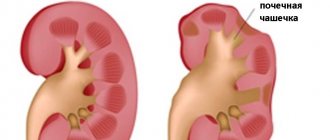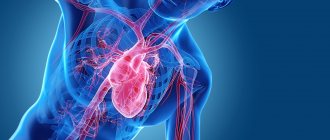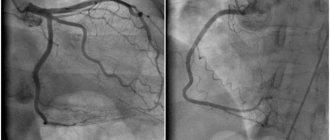Acute renal failure is a potentially reversible, sudden onset of severe impairment or cessation of renal function. Characterized by a violation of all renal functions (secretory, excretory and filtration), pronounced changes in water and electrolyte balance, rapidly increasing azotemia. Kidney failure leads to severe disturbances in metabolic processes in the body and, without treatment, leads to death from cardiac arrest.
Causes and risk factors
Etiology of prerenal acute renal failure
Prerenal acute renal failure can develop in conditions that are accompanied by a decrease in cardiac output (pulmonary embolism, heart failure, arrhythmia, cardiac tamponade, cardiogenic shock). Often the cause is a decrease in the amount of extracellular fluid (with diarrhea, dehydration, acute blood loss, burns, ascites caused by cirrhosis of the liver). May occur due to severe vasodilation that occurs during bacteriotoxic or anaphylactic shock.
Etiology of renal acute renal failure
Occurs due to toxic effects on the renal parenchyma of fertilizers, poisonous mushrooms, copper salts, cadmium, uranium and mercury. Develops with uncontrolled use of nephrotoxic medications (antitumor drugs, a number of antibiotics and sulfonamides). X-ray contrast agents and the listed drugs, prescribed in the usual dosage, can cause renal acute renal failure in patients with impaired renal function. In addition, this form of acute renal failure occurs when a large amount of myoglobin and hemoglobin circulates in the blood (with severe macrohemaglobinuria, transfusion of incompatible blood, prolonged compression of tissue during injury, drug and alcohol coma). Less commonly, the development of renal acute renal failure is caused by inflammatory kidney disease.
Etiology of postrenal acute renal failure
It develops when there is a mechanical disturbance in the passage of urine due to bilateral obstruction of the urinary tract by stones. Less commonly occurs with tumors of the prostate gland, bladder and ureters, tuberculous lesions, urethritis and periurethritis, dystrophic lesions of the retroperitoneal tissue. In severe combined injuries and extensive surgical interventions, acute renal failure is caused by several factors (shock, sepsis, blood transfusion, treatment with nephrotoxic drugs).
Prevention
The main measure for the prevention of prerenal acute renal failure is the correction of hypovolemia, carried out in a timely manner. Nonsteroidal anti-inflammatory drugs, diuretics and ACE inhibitors are used cautiously in cases of renal vascular damage or hypovolemia. During operations on the heart and large vessels, in the first hours of the development of rhabdomyolysis, to prevent acute renal failure, mannitol is administered intravenously at a dose of 0.5-1.0 g/kg.
AKI caused by acute urate nephropathy can be prevented by alkalinizing the urine and using allopurinol. If there is a threat of developing rhabdomyolysis, it is also important to alkalize the urine. The antidote for poisoning with ethylene glycol and methanol is ethanol. To prevent secondary infection, care is needed for arteriovenous shunts, intravenous and urinary catheters.
Symptoms and course of acute renal failure
There are four phases of acute renal failure:
- Initial phase of surge arrester
The patient's condition is determined by the underlying disease causing acute renal failure. Clinically, the initial phase is usually not detected due to the absence of characteristic symptoms. The circulatory collapse that occurs in this phase has a very short duration and therefore goes unnoticed. Nonspecific symptoms of acute renal failure (drowsiness, nausea, lack of appetite, weakness) are masked by manifestations of the underlying disease, injury or poisoning.
- Oligoanuric phase of acute renal failure
Anuria occurs rarely. The amount of urine excreted is less than 500 ml per day. Characterized by severe proteinuria, azotemia, hyperphosphatemia, hyperkalemia, hypernatemia, metabolic acidosis. There is diarrhea, nausea, and vomiting. With pulmonary edema due to overhydration, shortness of breath and moist rales appear. The patient is lethargic, drowsy, and may fall into a coma. Pericarditis and uremic gastroenterocolitis often develop, complicated by bleeding. The patient is susceptible to infection due to decreased immunity. Possible pancreatitis, stomatitis, mumps, pneumonia, sepsis.
The oligoanuric phase of acute renal failure develops during the first three days after exposure. Late development of the oligoanuric phase is considered a prognostically unfavorable sign. The average duration of this stage is 10-14 days. The period of oliguria can be shortened to several hours or extended to 6-8 weeks. Prolonged oliguria more often occurs in elderly patients with concomitant vascular pathology. In the oliguric stage of acute renal failure, which lasts more than a month, it is necessary to carry out additional differential diagnosis to exclude progressive glomerulonephritis, renal vasculitis, occlusion of the renal artery, diffuse necrosis of the renal cortex.
- Diuretic phase of acute renal failure
The duration of the diuretic phase is about two weeks. Daily diuresis gradually increases and reaches 2-5 liters. There is a gradual restoration of water and electrolyte balance. Hypokalemia is possible due to significant losses of potassium in the urine.
- Recovery phase
There is further restoration of renal function, which takes from 6 months to 1 year.
Anatomy and function of the kidneys
The kidneys are an extremely efficient organ. With their mass being 0.4% of body weight, organ blood flow accounts for 25% of cardiac output. Metabolic processes in the kidneys are accompanied by the use of 10% of the total oxygen necessary for the functioning of the body.
In the kidneys, blood ultrafiltration processes occur with the formation of about 150 liters of primary urine per day. Ultrafiltration is carried out only with an effective filtration pressure of at least 12 mm Hg. Art. It is calculated by the difference between hydrostatic (47 mmHg), oncotic plasma pressure (25 mmHg) and intracapsular (10 mmHg) pressure. Therefore, when hydrostatic (mean arterial) pressure decreases or when intracapsular pressure increases to more critical values, filtration stops and renal failure develops.
The renal tubules carry out the process of reabsorption of water, electrolytes, and other substances, as well as secretion. As a final result, about 1% of urine is excreted from the body, now secondary, which contains a high concentration of waste.
The kidneys are involved in hematopoiesis, regulation of water-electrolyte status and acid-base balance. The kidney is also a secretory organ. Renin is synthesized in its parenchyma, which plays an important role in the formation of arterial vascular tone (blood pressure).
Complications of acute renal failure
The severity of disorders characteristic of renal failure (fluid retention, azotemia, water-electrolyte imbalance) depends on the state of catabolism and the presence of oliguria. With severe oliguria, there is a decrease in the level of glomerular filtration, the release of electrolytes, water and nitrogen metabolism products is significantly reduced, which leads to more pronounced changes in blood composition.
- Disturbances of water-salt metabolism
With oliguria, the risk of developing water and salt overload increases. Hyperkalemia in acute renal failure is caused by insufficient excretion of potassium while the level of its release from tissues remains unchanged. In patients who do not suffer from oliguria, the potassium level is 0.3-0.5 mmol/day. More pronounced hyperkalemia in such patients may indicate an exogenous (blood transfusion, medications, presence of potassium-rich foods in the diet) or endogenous (hemolysis, tissue destruction) potassium load.
The first symptoms of hyperkalemia appear when potassium levels exceed 6.0-6.5 mmol/L. Patients complain of muscle weakness. In some cases, flaccid tetraparesis develops. ECG changes are noted. The amplitude of the P waves decreases, the PR interval increases, and bradycardia develops. A significant increase in potassium concentration can cause cardiac arrest.
In the first two stages of acute renal failure, hypocalcemia, hyperphosphatemia, and mild hypermagnesemia are observed.
- Blood changes
The consequence of severe azotemia is inhibition of erythropoiesis. The lifespan of red blood cells is reduced. Normocytic normochromic anemia develops.
- Immune disorders
Immune suppression contributes to the occurrence of infectious diseases in 30-70% of patients with acute renal failure. The addition of infection aggravates the course of the disease and often causes the death of the patient. Inflammation develops in the area of postoperative wounds, the oral cavity, respiratory system, and urinary tract suffer. A common complication of acute renal failure is sepsis, which can be caused by both gram-positive and gram-negative flora.
- Neurological disorders
There is drowsiness, confusion, disorientation, lethargy, alternating with periods of excitement. Peripheral neuropathy occurs more often in older patients.
- Complications from the cardiovascular system
With acute renal failure, congestive heart failure, arrhythmia, pericarditis, and hypertension may develop.
- Disorders of the gastrointestinal tract
Patients are concerned about a feeling of discomfort in the abdominal cavity, nausea, vomiting, loss of appetite. In severe cases, uremic gastroenterocolitis develops, often complicated by bleeding.
Extrarenal cleansing methods
Hemodialysis and non-ritoneal dialysis
Hemodialysis is a method of correcting water-electrolyte and acid-base balance and removing various toxic substances from the body; The method is based on dialysis and ultrafiltration of blood using an artificial kidney apparatus. An arteriovenous shunt is required for the procedure. During the procedure, heparin must be administered to avoid blood clotting.
Peritoneal dialysis is intracorporeal dialysis, which involves injecting a dialysate solution into the abdominal cavity for several hours. The dialysate almost always remains in the abdominal cavity for 4-6 hours, after which it needs to be replaced. Components of a typical dialysate solution:
- lactate
- sodium
- chlorine
- calcium
- magnesium
- dextrose
An indwelling Tenckhoff catheter is needed to inject and remove the solution. It is equipped with a special coupling to prevent infection. Peritoneal dialysis is prescribed mainly to persons with nephrotoxic acute renal failure and unstable hemodynamics, as well as at risk of bleeding.
For hemodialysis and peritoneal dialysis, the indications are the same: hyperkalemia, hypervolemia, and metabolic acidosis refractory to conservative treatment. Contraindications :
- stomach and intestinal bleeding
- cerebral hemorrhage
- malignant neoplasms with metastases
- severe hemodynamic disturbances with a drop in blood pressure
- dementia
- mental disorders
Peritoneal dialysis is not prescribed to patients with wounds on the anterior abdominal wall and with adhesions in the abdominal cavity.
Complications . Hemodialysis may cause the following complications:
- infection with hepatitis B and C viruses
- thrombosis and infection in the area of the arteriovenous shunt
- dialysis dementia
- allergic reactions to tubing and dialysis membrane materials
- renal amyloidosis (with long-term hemodialysis)
- bacterial peritonitis (peritoneal dialysis)
Acute kidney injury
AKI is often diagnosed when renal damage is intractable, and therapy does not guarantee restoration of organ function. Focusing on the concept of acute kidney injury, it is possible to identify acute deterioration of kidney function even before the onset of hypercreatininemia.
Acute kidney damage occurs when there is a rapid (up to 2 days) decrease in kidney function. For diagnosis, serum creatinine concentration is determined at least twice within 2 days. Risk factors for acute kidney injury are:
- elderly age
- chronic kidney disease
- autoimmune diseases
- diabetes
- sepsis
- infections and urinary tract obstruction
- contact with nephrotoxins
- injuries
- multiple myeloma
- shock
- bleeding disorders
- blood transfusions
- disorders of electrolyte homeostasis
- pregnancy
- heart failure
- acute myocardial infarction
- hypovolemia
- cardiac surgery
- African American ethno-racial group
- hypalbuminemia
In case of acute kidney damage, therapy should be focused on the complete restoration of kidney function and the elimination of factors leading to the development of this damage. There are 3 possible outcomes of acute kidney injury:
- full recovery
- recovery from a defect
- end-stage renal failure










